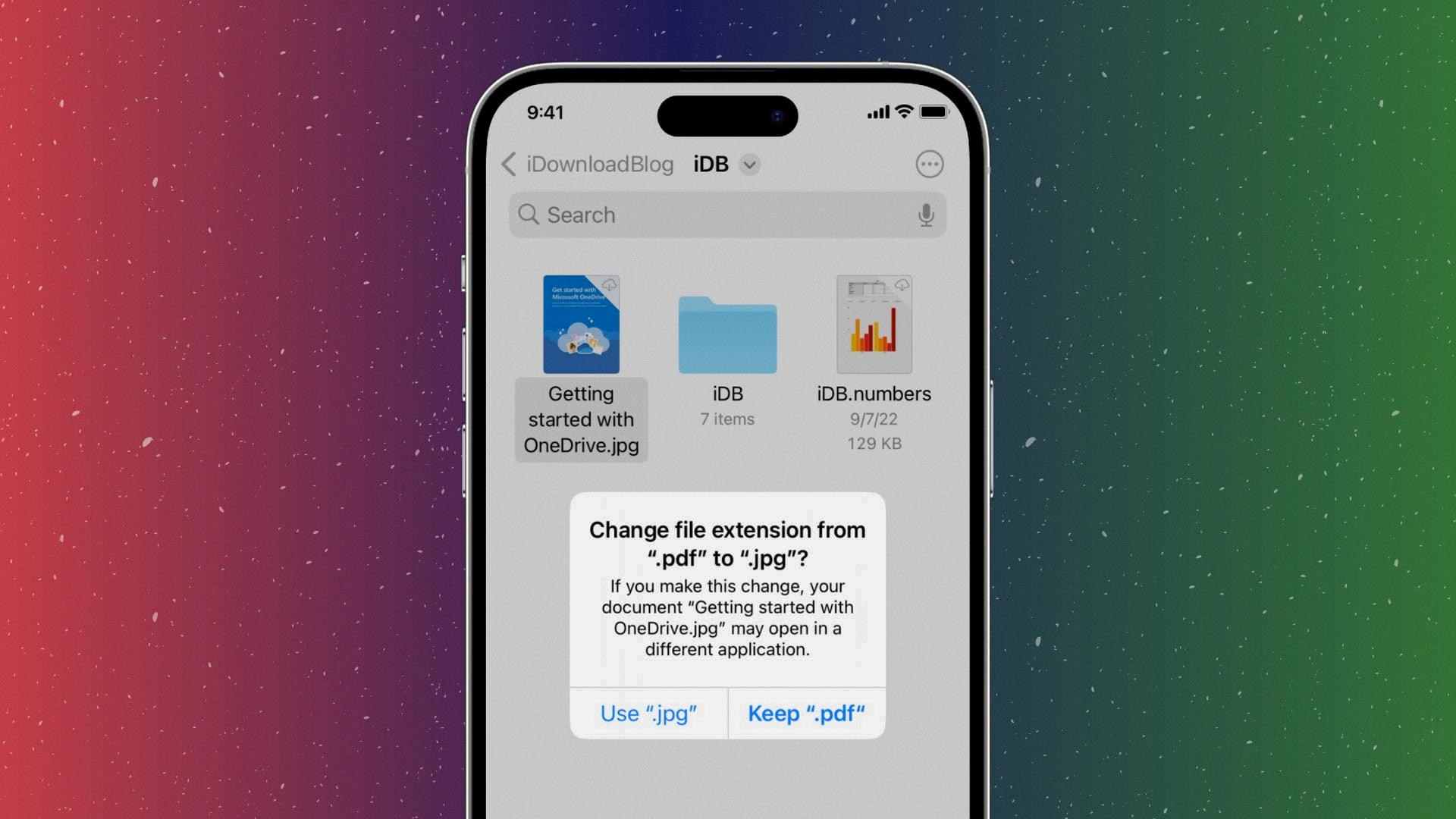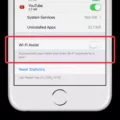In today’s digital world, file extensions play a crucial role in determining the type of file and the program that can open it. Whether you’re using a Windows 10 computer or an iPhone/iPad, understanding how to change file extensions can be incredibly useful. In this article, we’ll explore the concept of file extensions and provide step-by-step instructions on how to change file extensions on both Windows 10 and iOS devices.
File extensions serve as a way to identify the format and content of a file. They typically consist of a period followed by a few letters that represent the file type. For example, “.docx” indicates a Microsoft Word document, while “.jpg” signifies an image file in JPEG format. Changing a file extension can be necessary when you want to convert a file to a different format or when you encounter compatibility issues with certain programs.
Let’s start with changing file extensions on Windows 10. Follow these steps:
1. Open Windows File Explorer by either clicking on the folder icon in the taskbar or pressing the Windows key + E on your keyboard.
2. Locate the file that you want to change the extension for. It could be a document, image, or any other file type.
3. Right-click on the file and select “Rename” from the context menu. Alternatively, you can also select the file and press the F2 key on your keyboard.
4. The current file name will be highlighted, and you can replace the existing file extension with a new one. Make sure to type the new extension accurately.
5. After entering the new extension, press the “Enter” key on your keyboard to save the changes. You’ll be prompted with a warning message about changing the file type. Click “Yes” to proceed.
Now, let’s move on to changing file extensions on iOS devices:
1. Open the Files app on your iPhone or iPad. This app allows you to access and manage files stored on your device or in cloud storage services.
2. Locate the file that you want to change the extension for. You can browse through different folders or use the search function to find the specific file.
3. Long-press the file until a menu appears. From the menu, select “Rename.” Alternatively, you can also swipe left on the file and tap “Rename.”
4. In the rename window, you’ll see the current file name with the extension. Tap next to the file extension to edit it.
5. Type in the new file extension that you want to assign to the file. Be careful to choose a valid extension for the desired file type.
6. Once you’ve entered the new extension, tap “Done” on your keyboard to save the changes.
7. a confirmation prompt will appear, asking if you want to change the extension. Tap “Use ” to complete the process.
It’s important to note that changing a file extension doesn’t automatically convert the file to a different format. It simply modifies the way the file is recognized by the system and associated programs. To actually convert a file to a different format, you would need to use specialized software or online conversion tools.
Understanding how to change file extensions can be a valuable skill when it comes to managing and working with different file types. Whether you’re using Windows 10 or iOS devices, the process is relatively straightforward. By following the steps outlined in this article, you can easily change file extensions and adapt files to your specific needs.
How to Change The Extension Of A File?
To change the extension of a file on Windows 10, you can follow these step-by-step instructions:
1. Firstly, open the Windows File Explorer by either clicking on the folder icon located on the taskbar or pressing the Windows key + E on your keyboard.
2. Navigate to the location where the file you want to change the extension for is saved. You can do this by clicking on the relevant folders in the left-hand sidebar or using the search bar at the top.
3. Once you have located the file, right-click on it to open a context menu. From the menu, select “Rename” or simply click on the file and press the F2 key on your keyboard. This will allow you to edit the file name.
4. Now, you can replace the current extension with the new one you desire. Make sure to only change the part after the dot (.) and avoid altering the rest of the file name, as it may render the file unusable.
5. Press the “Enter” key on your keyboard or click anywhere outside the file name to save the changes. Windows will ask for confirmation to change the file extension. Click “Yes” to proceed.
6. Once the extension is changed, the file will be associated with the new file type. However, keep in mind that simply changing the extension does not convert the file to a different format. It only affects how the operating system recognizes and opens the file.
By following these steps, you should be able to change the extension of a file on Windows 10 without the need for any additional software or tools.

How Do You Change File Extension On iPad?
To change the file extension on your iPad, you can follow these steps:
1. First, open the Files app on your iPad. This app allows you to manage and access files stored on your device.
2. Locate the file for which you want to change the file extension. You can navigate through different folders to find the file.
3. Once you have found the file, long-press on it until a menu appears. This menu will provide various options for managing the file.
4. From the menu, select the “Rename” option. This will allow you to change the name and extension of the file.
5. In the rename window, you will see the current file name with its extension. Tap next to the file extension to select it.
6. Use your keyboard to type the new extension that you want to assign to the file. Make sure to enter the correct extension for the desired file format.
7. After entering the new extension, click on the “Done” button on your keyboard. This will save the changes you made to the file name and extension.
8. the Files app will prompt you to confirm the extension change. Tap on the option that says “Use ” to confirm the change.
By following these steps, you will be able to change the file extension on your iPad using the Files app. It’s important to note that changing the file extension may affect how the file is recognized and opened by different apps, so make sure to choose the appropriate extension for your needs.
Can You Just Change The File Extension?
You can change the file extension by either renaming the file or using the right-click option. Renaming the file involves selecting the file and changing its name, including the file extension, to the desired format. For example, if you have a file named “document.txt” and want to change it to a PDF file, you can rename it to “document.pdf”.
On the other hand, if you prefer using the right-click option, you can simply right-click on the file you want to convert and select the “Rename” option. Then, change the file extension to the format you want, such as “.pdf”.
By changing the file extension, your computer will attempt to convert the file to the new format. However, it’s important to note that simply changing the file extension does not guarantee a successful conversion. Some file formats may require specific software or tools to properly convert the file content.
Changing the file extension is a quick and easy way to attempt file conversion. However, it’s important to ensure that the new file format is compatible with the content of the original file and that you have the necessary software or tools for the conversion process.
What is The Extension Of iOS File?
The extension of an iOS file is .ipa. This file format is specifically used for iOS and iPadOS applications. Developed by Apple, Inc., the .ipa file serves as an application archive that stores an iOS or iPadOS app. It is similar to other package formats like zip or JAR, but specifically designed for mobile apps on Apple devices. The .ipa file contains all the necessary components and resources of the app, allowing it to be easily installed and run on iOS and iPadOS devices.
Conclusion
A file extension is a set of characters that follows the last period in a file name. It identifies the type of data stored in a file and determines which program should be used to open and interpret the file. Changing a file extension can be done on both Windows 10 and iPhone/iPad devices, although the process may vary slightly.
On Windows 10, you can change the file extension by opening Windows File Explorer, selecting the file you want to change, and replacing the old file extension with a new one. This can be done by right-clicking on the file and selecting the “Rename” option, then typing in the desired file extension. Pressing the “Enter” button on your keyboard will save the changes.
On an iPhone or iPad, you can change the file extension by opening the Files app, long-pressing the file you want to change, and selecting the “Rename” option. In the rename window, tap next to the file extension and type in the new extension. Tap “Done” on your keyboard to save the changes, and confirm the extension change when prompted.
File extensions play a crucial role in identifying and organizing files on a computer or device. They help determine the compatibility of files with different programs and enable users to open and work with specific file types. It is important to note that changing a file extension does not necessarily convert the file to a different format. The file must still contain the appropriate data and be compatible with the program intended to open it.
Understanding file extensions and knowing how to change them can be helpful in various situations, such as when you receive a file that your device cannot open or when you want to change the default program associated with a specific file type. However, it is essential to exercise caution when changing file extensions, as improper changes can render files inaccessible or unusable.
File extensions are essential for identifying and organizing files, and changing them can be done on Windows 10 and iPhone/iPad devices. It is important to follow the correct procedures and exercise caution to ensure the integrity and compatibility of the files.








